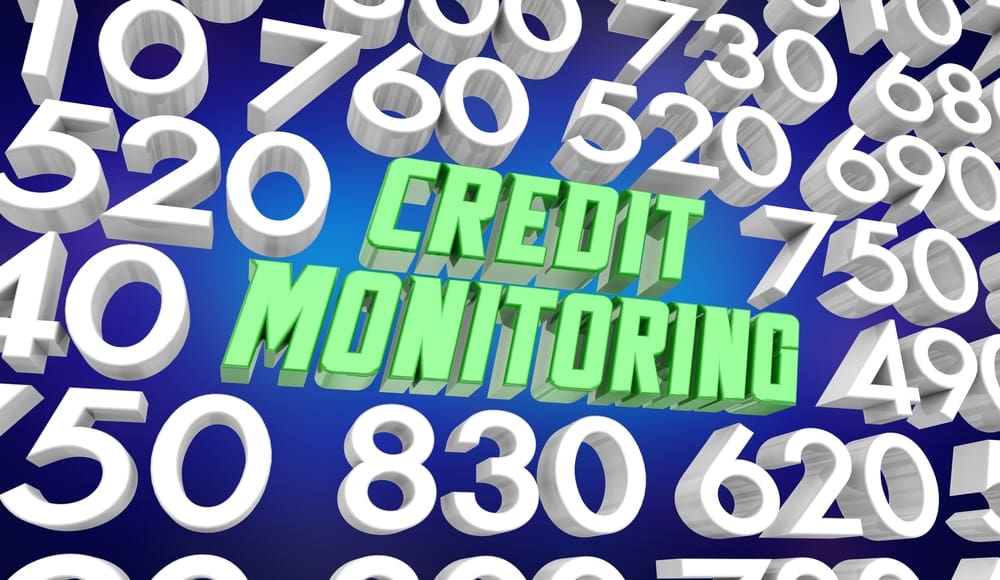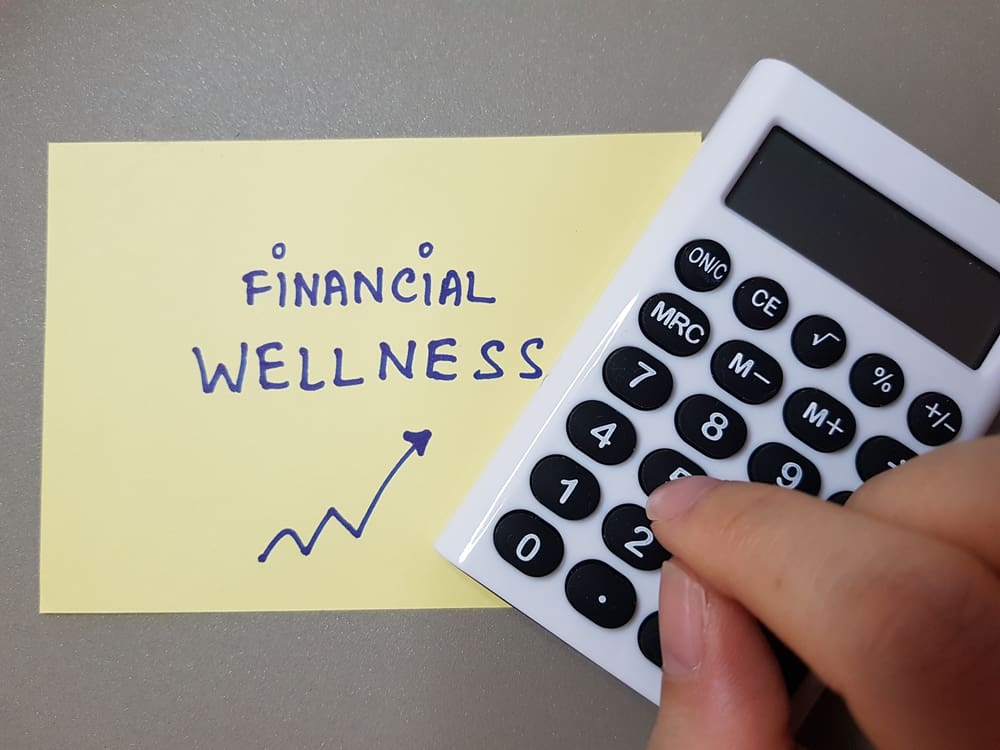Achieve Financial Wellness at Work & Home—Debt Saving & Credit Challenge. Find Out More in Our Latest Article!
THIS ARTICLE MAY CONTAIN AFFILIATE LINKS, MEANING I GET A COMMISSION IF YOU DECIDE TO MAKE A PURCHASE THROUGH MY LINKS AT NO COST TO YOU. PLEASE READ MY AFFILIATE DISCLOSURE FOR MORE INFO.
Don’t Have Time To Read The Full Article. Here’s What You Are Missing.
- Assess Your Current Financial Situation
- Gather All Financial Information
- Calculate Your Debt-to-Income Ratio
- Identify Areas for Improvement
- Create a Budget
- Tips for Creating a Realistic Budget
- Tools and Resources to Help with Budgeting
- Set Financial Goals
- Why Setting Goals Is Important
- Types of Financial Goals to Consider
- How to Make Your Goals Achievable
- Start Saving
- Importance of Saving Money
- Tips for Saving on a Tight Budget
- Ways to Increase Your Savings
- Tackle Your Debt
- Strategies for Paying off Debt
- Prioritizing Which Debts to Pay Off First
- How to Negotiate with Creditors
- Monitor Your Credit Score
- Explanation of Credit Score
- Importance of Monitoring Your Credit Score
- Tips for Improving Your Credit Score
- Stay Committed and Accountable
- How to Stay Motivated
- Utilizing Support Systems and Resources
- Take the Debt Saving & Credit Challenge
- Recap, seven easy steps you can take now to win your Debt Saving & Credit Challenge:
- Frequently Asked Questions
Many people make resolutions each year to improve their financial wellness, but knowing where to start can be difficult.
The Debt Saving & Credit Challenge is a step-by-step plan designed to help individuals manage their finances and improve their financial wellness.
This challenge involves assessing your current financial situation, creating a budget, setting financial goals, saving money, tackling debt, monitoring your credit score, and staying committed and accountable.
Since there are no quick fixes, only solutions, the Debt Saving & Credit Challenge isn’t a one-size-fits-all.
Taking the Debt Saving & Credit Challenge is important because it can help individuals better understand their finances and positively change their financial habits.
By following the steps in the challenge, individuals can choose the challenge that matters most.
Individuals can work on reducing their debt, increasing their savings, and improving their credit scores. The challenge provides a clear roadmap for improving financial wellness and achieving financial goals.
Individuals should assess their financial situation before taking the Debt Saving & Credit Challenge. This involves gathering all financial information, calculating their debt-to-income ratio, and identifying areas for improvement.
From there, they can create a financial blueprint (budget), set financial goals, start saving money, tackle their debt, monitor their credit score, and stay committed and accountable. By quickly following these steps, individuals can take control of their finances and improve their financial wellness.
Assess Your Current Financial Situation

The first step in improving financial wellness is to assess your current financial situation. This involves gathering all financial information, calculating your debt-to-income ratio, and identifying areas for improvement.
Gather All Financial Information
To get a clear picture of your financial situation, gather all financial information such as bank statements, credit card statements, loan statements, and investment accounts. This will help you understand your income, expenses, debts, and assets.
Calculate Your Debt-to-Income Ratio
Calculating your debt-to-income ratio is an essential step in assessing your financial situation. This ratio compares your monthly debt payments to your monthly income. To compute your debt-to-income ratio, divide your monthly debt payments by your monthly income. Your debt-to-income ratio should be below 36%.
Identify Areas for Improvement
Identifying areas for improvement is crucial in improving your financial wellness. Look for areas where you can reduce expenses, such as eating out less or canceling subscriptions. Consider increasing your income by taking on a side job or negotiating a raise. Additionally, look for ways to pay off debt and save money.
By assessing your current financial situation, you can better understand your financial wellness and identify areas for improvement. This will help you take the necessary steps to improve your financial well-being and take the Debt Saving & Credit Challenge.
Create a Budget

Importance of Budgeting
Creating a budget is the foundation of financial wellness. It allows individuals to identify their income and expenses and make informed decisions about their spending habits. By developing a budget, individuals can gain control over their finances and avoid overspending, reducing debt and financial stress.
Tips for Creating a Realistic Budget
When creating a budget, being realistic and honest about your income and expenses is essential. Here are some tips to help design a realistic budget:
- Start by tracking your expenses for a month or two to get an accurate idea of where your money is going.
- Categorize your expenses into fixed expenses (rent, mortgage, and car payments) and variable expenses (groceries, entertainment, and clothing).
- Identify areas where you can cut back on expenses, such as eating out less or canceling subscriptions you don’t use.
- Set realistic goals for your budget, such as saving a certain amount each month or paying off debt.
- Be flexible with your budget and adjust it as needed to accommodate unexpected expenses.
Tools and Resources to Help with Budgeting
There are many tools and resources available to help with budgeting, including:
- Budgeting apps like Empower, YNAB, and Personal Capital can help track expenses and create a budget.
- Online budgeting calculators, such as those offered by Bankrate and NerdWallet, can help calculate income and expenses.
- Budgeting worksheets: Learn How To Use Excel For Budgeting with this free guide from NextGen Money Skills.
- Financial advisors who can offer personalized advice and guidance on budgeting and financial planning.
By utilizing these tools and resources, individuals can create a budget that suits their unique financial situation and goals.
Set Financial Goals
Setting financial goals is essential in the Debt Saving & Credit Challenge. With clear goals, staying motivated and tracking progress can be easy. Individuals can take control of their finances and work towards a brighter financial future by establishing specific, measurable, achievable, relevant, and time-bound (SMART) goals.
Why Setting Goals Is Important
Setting financial goals provides individuals with a roadmap to achieve their desired outcomes. Goals help individuals prioritize their spending, saving, and debt repayment efforts. Additionally, goals can help individuals stay motivated and focused on their financial objectives, even when faced with challenges or setbacks.
Types of Financial Goals to Consider
There are several types of financial goals that individuals may consider when taking the Debt Saving & Credit Challenge. These include:
- Paying off debt: Setting a goal to pay off credit card debt, student loans, or other outstanding balances can help individuals reduce their debt load and improve their credit scores.
- Building an emergency fund: Setting a goal to save three to six months of living expenses can help individuals prepare for unexpected financial emergencies.
- Saving for retirement: Setting a goal to save for retirement can help individuals build a comfortable nest egg for their golden years.
- Saving for a down payment: Setting a goal to save for a down payment on a home can help individuals achieve their dream of homeownership.
- Investing: Setting a goal to invest in stocks, bonds, or mutual funds can help individuals grow their wealth over time.
How to Make Your Goals Achievable
To make financial goals achievable, individuals should follow the SMART goal-setting framework. This involves setting specific, measurable, attainable, relevant, and time-bound goals. For example, instead of setting a vague goal to “save more money,” individuals should set a specific goal to “save $500 per month for the next six months.”
Additionally, individuals should break down larger goals into smaller, more manageable tasks. This can help prevent feeling overwhelmed and make it easier to track progress. For example, if an individual’s goal is to pay off $10,000 in credit card debt, they may break this down into smaller monthly goals, such as paying off $1,000 monthly for ten months.
Finally, individuals should celebrate their successes along the way. Celebrating milestones like paying off a credit card or reaching a savings goal can help individuals stay motivated and committed to their financial goals.
Start Saving

Saving money is an essential part of improving your financial wellness. It helps you build an emergency fund, achieve your financial goals, and reduce your reliance on credit. Here are some tips to help you start saving:
Importance of Saving Money
Saving money is crucial because it provides a safety net for unexpected expenses and helps you avoid debt. It also allows you to invest in your future by setting aside money for retirement, education, or other long-term goals. By saving money, you can achieve financial stability and independence.
Tips for Saving on a Tight Budget
Saving money can be challenging, especially when you have a tight budget. However, there are several ways to reduce expenses and increase your savings. Consider the following tips:
- Create a budget: A budget helps you track your expenses and identify areas for savings. Use a budgeting app or spreadsheet to help you stay on track.
- Reduce your bills: Consider ways to lower your monthly bills, such as negotiating with service providers or switching to a cheaper plan.
- Cut back on non-essential expenses: Evaluate your spending habits and identify areas where you can reduce your expenses, such as eating out, entertainment, or shopping.
- Use coupons and discounts: Use coupons, deals, and loyalty programs to save money on purchases.
- Shop smart: Compare prices and shop around for the best deals. Consider buying used or refurbished items instead of new ones.
Ways to Increase Your Savings
Once you have reduced your expenses, you can focus on increasing your savings. Here are some ways to boost your savings:
- Set savings goals: Determine how much you want to save and set specific goals for achieving them. This will help you stay motivated and focused.
- Automate your savings: Set up automatic transfers from your checking account to your savings account. This way, you can save money without even thinking about it.
- Prioritize your savings: Make saving a priority by setting aside money before paying your bills or other expenses.
- Earn extra income: To increase your revenue and save money, Consider taking on a part-time job, freelancing, or selling unwanted items.
Following these tips can save money and improve your financial wellness. Remember, every small step can make a big difference in the long run.
Tackle Your Debt

Debt can be a significant obstacle to financial wellness, but it’s manageable. By following these strategies, you can plan to pay off your debts and take control of your finances.
Strategies for Paying off Debt
There are several strategies you can use to pay off your debt. One popular method is the debt snowball method. This involves listing your debts from smallest to most significant balance and attacking the smallest debt first while making minimum payments on the others. Once the smallest debt is paid off, you move on to the next smallest debt, and so on. This method can be effective because it gives you a sense of accomplishment and momentum as you pay off each debt.
Another strategy is the debt avalanche method. With this method, you list your debts from the highest to lowest interest rate and then attack the debt with the highest interest rate first while making minimum payments on the others. Once the highest-interest debt is paid off, you move on to the next highest-interest debt, and so on. This method can be effective because it saves you money on interest in the long run.
Prioritizing Which Debts to Pay Off First
When prioritizing which debts to pay off first, it’s essential to consider each debt’s interest rates and balances. High-interest debts, such as credit card debt, should generally be paid off first because they can quickly accumulate interest and become difficult to pay. However, it’s also essential to consider the balances of each debt. If you have a small debt with a high interest rate and a large debt with a low interest rate, paying off the small debt first may make sense to get it out of the way.
How to Negotiate with Creditors
If you’re struggling to pay your debts, it may be worth reaching out to your creditors to see if they will work with you. Many creditors are willing to negotiate payment plans or settle for less than the total amount owed if it means they’ll get some of their money back. Being honest about your financial situation and willing to compromise is essential when dealing with creditors. It’s also a good idea to get any agreements in writing to avoid misunderstandings later on.
Overall, tackling debt can be challenging but rewarding. By following these strategies and staying committed to your plan, you can take control of your finances and work towards a debt-free future.
Monitor Your Credit Score

Explanation of Credit Score
A credit score is a three-digit number that represents an individual’s creditworthiness. It is calculated based on the individual’s credit history, including their payment history, credit utilization, length of credit history, types of credit used, and recent credit inquiries. Lenders and financial institutions use credit scores to determine the likelihood of an individual repaying their debts.
Importance of Monitoring Your Credit Score
Monitoring your credit score is essential because it allows you to track your creditworthiness and identify any errors or fraudulent activity on your credit report. Regularly checking your credit score can also help you make informed financial decisions, such as when to apply for a loan or credit card. Fortifying Your Finances:
Tips for Improving Your Credit Score
Improving your credit score takes time and effort, but there are several tips you can follow to help boost your score:
- Pay your bills on time: Payment history is one of the most crucial factors in calculating your credit score, so it’s vital to pay your bills on time.
- Keep your credit utilization low: Your credit utilization, or the amount of credit you use compared to your credit limit, also plays a significant role in your credit score. A good rule of thumb is to keep your credit utilization below 30%.
- Monitor your credit report for errors: Check your credit report regularly for errors or fraudulent activity and dispute any inaccuracies with the credit bureau.
- Limit new credit applications: Applying for too much credit at once can hurt your credit score, so it’s essential to limit new credit applications.
- Consider a secured credit card: If you need help getting approved for a traditional credit card, a secure credit card, which requires a security deposit, can help you build credit.
Following these tips and monitoring your credit score regularly can improve your creditworthiness and achieve financial stability.
Stay Committed and Accountable

Importance of Staying Committed to the Challenge
Staying committed to the Debt Saving & Credit Challenge is crucial for achieving financial wellness. It can be easy to lose motivation or become discouraged when faced with setbacks or unexpected expenses. However, it is essential to remember that improving financial wellness is a journey; seeing results takes time and effort.
One way to stay committed is to keep your financial goals in mind. Write them down and place them somewhere visible, such as on a bulletin board or your fridge. This serves as a reminder of why you started the challenge and what you hope to achieve.
Another way to stay committed is to track your progress. Record your debt payments, savings, and credit score changes. This will help you see your progress and motivate you to continue.
How to Stay Motivated
Staying motivated throughout the Debt Saving & Credit Challenge can be challenging, but several strategies can help you stay on track.
First, celebrate your successes. Whenever you reach a financial goal or milestone, take the time to acknowledge your hard work and give yourself a pat on the back. This can help you stay motivated and focused on the bigger picture.
Second, find an accountability partner. This could be a friend, family member, or financial advisor who can provide support and encouragement throughout the challenge.
Third, break down your goals into smaller, more manageable steps. This can help you avoid feeling overwhelmed and make progress towards your goals more achievable.
Utilizing Support Systems and Resources
Support systems and resources can also help you stay committed and accountable during the Debt Saving & Credit Challenge.
Consider joining a financial support group or online community to connect with others working towards financial wellness. These groups can provide motivation, advice, and support.
Many financial tools and resources are available to help you manage your money, including budgeting apps, debt repayment calculators, and credit monitoring services. Take advantage of these resources to help you stay on track and achieve your financial goals.
Staying committed and accountable during the Debt Saving & Credit Challenge is essential for achieving financial wellness. You can complete the challenge and improve your financial well-being by setting goals, tracking your progress, staying motivated, and utilizing support systems and resources.
Take the Debt Saving & Credit Challenge

Taking the Debt Saving & Credit Challenge is essential to improving financial wellness.
By following the seven quick steps outlined in this article, individuals can better understand their current financial situation, create a realistic budget, set achievable financial goals, save money, tackle debt, monitor their credit score, and stay committed and accountable to their financial goals.
It is important to remember that improving financial wellness is a journey, not a destination. It requires commitment, discipline, and patience.
By taking the Debt Saving & Credit Challenge, individuals can develop financial habits that will serve them well for years.
Recap, seven easy steps you can take now to win your Debt Saving & Credit Challenge:
- Assess your current financial situation
- Create a budget
- Set financial goals
- Start saving
- Tackle your debt
- Monitor your credit score
- Stay committed and accountable
By following these steps, individuals can take control of their finances and improve their overall financial wellness. It is important to remember that everyone’s financial situation is unique, and what works for one person may not work for another. However, by utilizing the tools and resources available, individuals can create a personalized plan for financial success.
Some tips for success include staying motivated, utilizing support systems, and being open to making adjustments as needed. Celebrating small victories along the way is essential, as they can motivate you to continue on the path to financial wellness.
Taking the Debt Saving & Credit Challenge is worthwhile for anyone looking to improve their financial wellness. By following the seven steps outlined in this article, individuals can develop financial habits that will serve them well for years.
Frequently Asked Questions
What are the essential steps to evaluate and improve my current financial situation?
The first and most crucial step in taking the Debt Saving & Credit Challenge is assessing your financial situation. Start by gathering all your financial information, including income, expenses, debts, and assets. Calculate your debt-to-income ratio to see how much of your income goes towards debt repayment. Identify areas for improvement, such as reducing expenses or increasing revenue. This will help you create a realistic plan to improve your financial wellness.
How can establishing a realistic budget contribute to better financial management?
Creating a budget is a crucial step in managing your finances and taking control of your money. A realistic budget helps you track your expenses, identify areas where you can cut back, and prioritize your spending. It also enables you to avoid overspending and accumulating more debt. Include all fees, including fixed and variable costs, and set realistic saving and debt repayment goals.
Why is setting clear financial goals critical, and what types of goals should I consider?
Setting clear financial goals is essential to achieving financial success. Goals give you direction and motivation to work towards a specific outcome. Consider setting short-term and long-term goals, such as paying off debt, saving for emergencies, or investing for retirement. Ensure your goals are specific, measurable, achievable, relevant, and time-bound (SMART).
What are some effective savings strategies, even on a limited budget?
Saving money is crucial to improving your financial wellness, but it can be challenging, especially if you have a limited budget. Start by tracking your expenses and identifying areas where you can cut back, such as dining out, entertainment, or subscriptions. Consider implementing a “no-spend” challenge or automating your savings to make saving easier. You can also look for ways to increase your income, such as taking on a side hustle or selling unused items.
What methods can I use to reduce my debt and prioritize payments systematically?
Reducing debt is a critical step in improving your financial wellness. Start by creating a debt repayment plan and prioritizing which debts to pay off first. Consider using the debt avalanche or snowball method to pay off debts systematically. You can also negotiate with creditors to reduce interest rates or payment amounts. Be sure to make payments on time and avoid accumulating more debt.
How does monitoring and enhancing my credit score impact my overall financial wellness?
Your credit score is a critical factor in determining your financial wellness. A good credit score can help you qualify for loans, credit cards, and better interest rates. Start by monitoring your credit score regularly and identifying areas for improvement. Paying bills on time, reducing debt, and decreasing credit utilization are effective ways to improve your credit score. You can also consider using credit monitoring services or disputing errors on your credit report.
Remember, taking the Debt Saving & Credit Challenge is a journey, not a destination. Stay committed and accountable, and utilize support systems and resources to help you achieve your financial goals.
Disclaimer: Millennial Credit Advisers is not a licensed credit service provider or financial advisor. We don’t offer credit repair, debt management, or legal services. Educate yourself on saving, reducing debt, and managing credit for economic improvement. Understand credit reports, scores, and financial products. Consult a financial advisor for personalized advice. Track your progress for a better credit journey.
Written content – “Please view our full AI Use Disclosure.
“We improve our products and advertising by using Microsoft Clarity to see how you use our website. By using our site, you agree that we and Microsoft can collect and use this data. Our privacy policy has more details.”
















